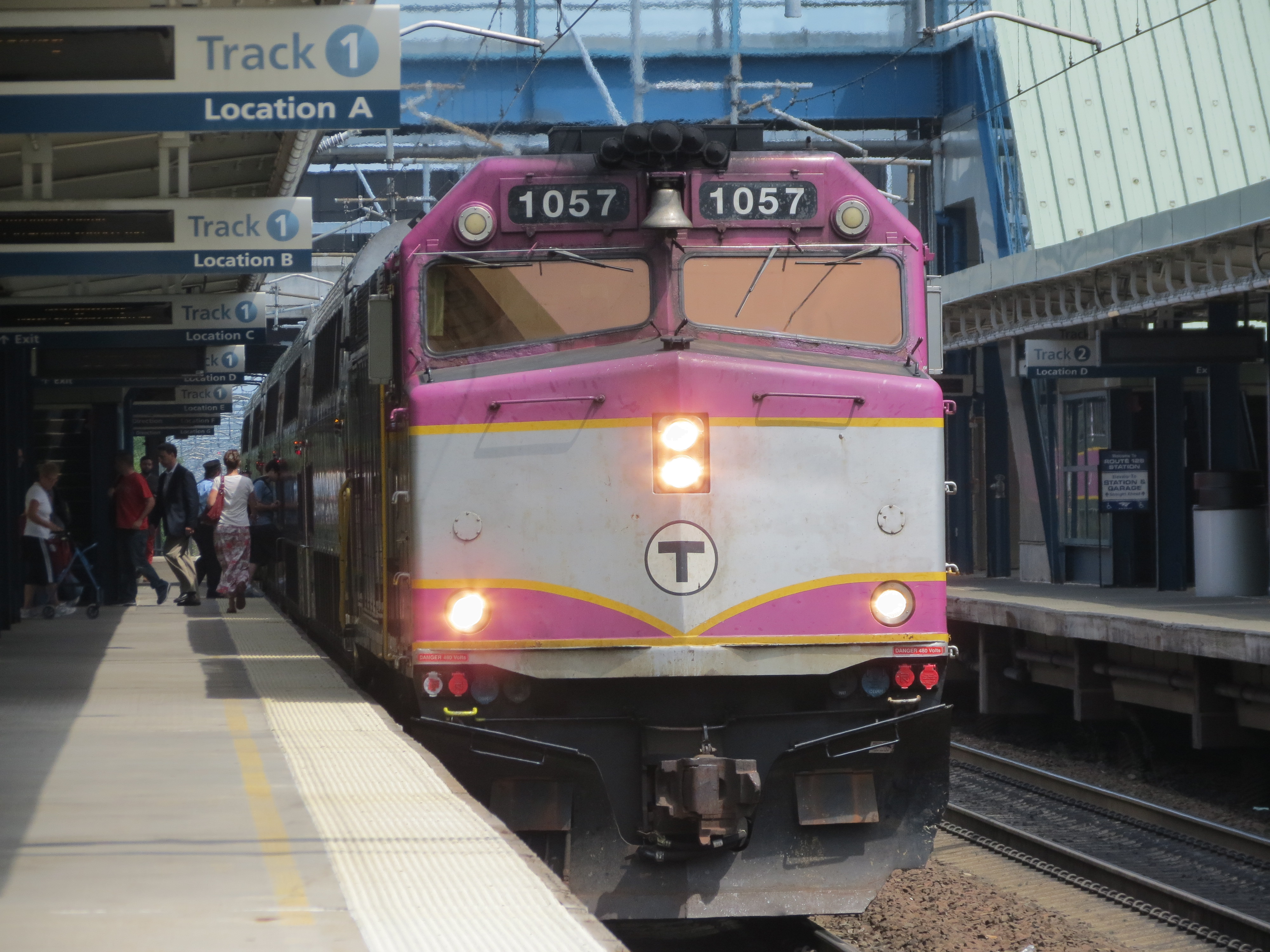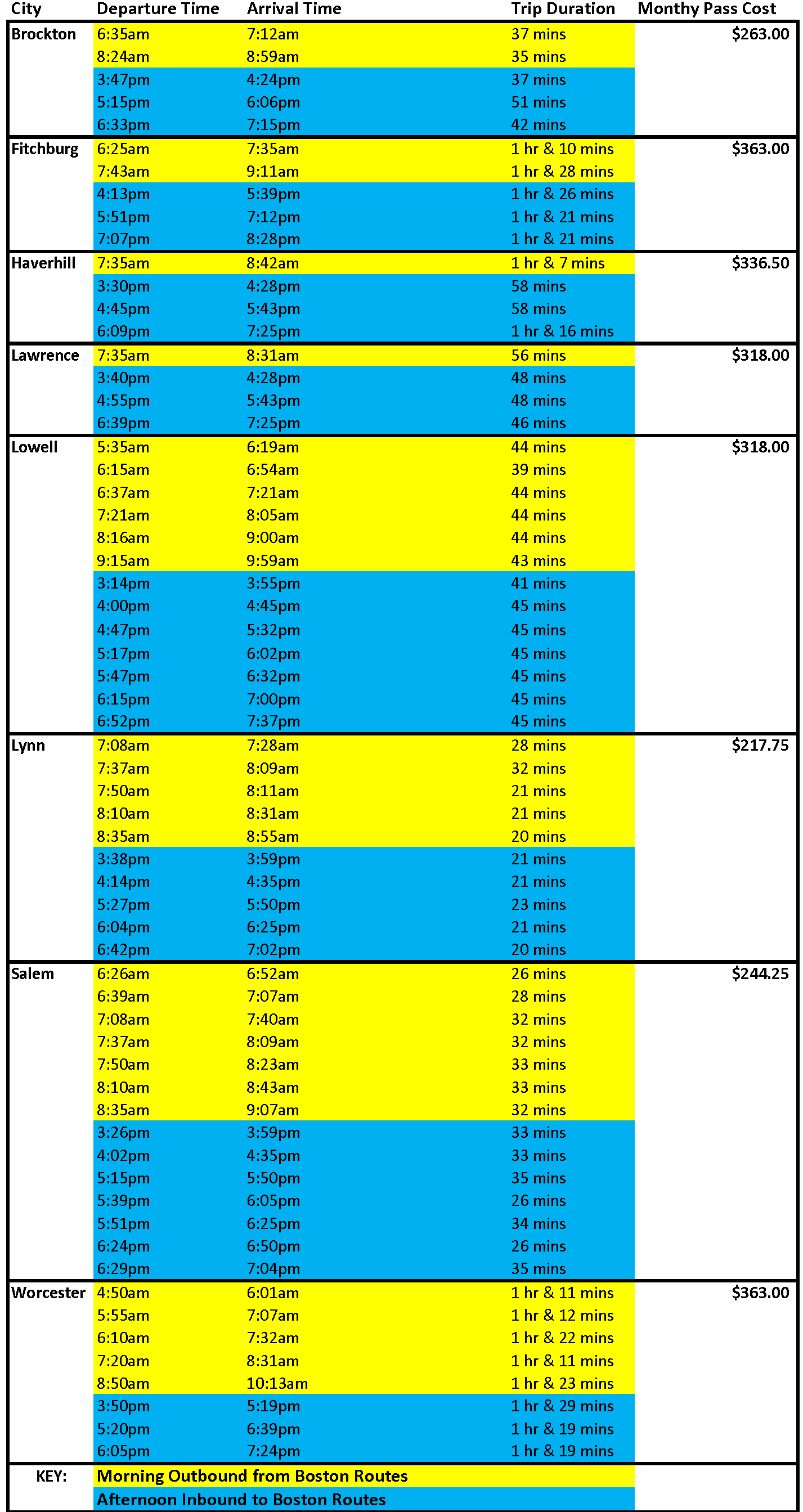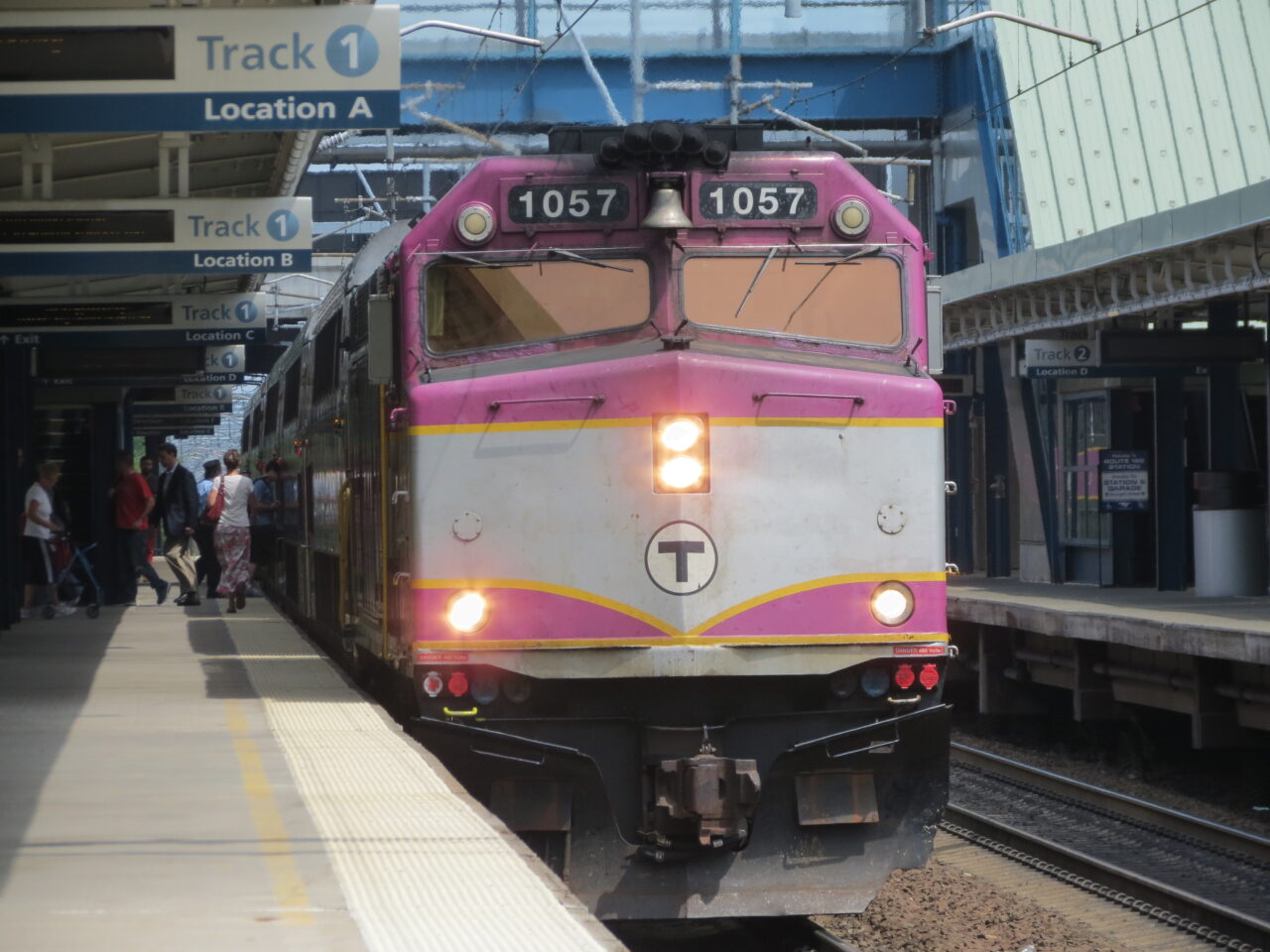
With thousands of new housing units going up in downtown Boston at the terminus of commuter rail lines, Gateway Cities have a newfound opportunity to draw reverse commuters and recapture some of the talent they have lost to Boston.
The MBTA doesn’t track how many riders currently board in Boston and disembark in Gateway Cities. Without passenger counts, the best data we have to estimate the flow of reverse commuters is from the Longitudinal Employer-Household Dynamics (LEHD) program from the US Census. These figures give us the total number of workers in each community by where these workers reside.
We took a look at LEHD data for Brockton, Fitchburg, Lynn, and Worcester. Unfortunately, these LEHD data don’t tell us the mode of transportation, so there’s no way to know for certain how many ride MBTA commuter rail, but this distinction isn’t essential since the big takeaway is the totals are generally small.
Lynn draws the most Boston residents, with over 500 a day commuting to the North Shore city; about half that number travel south to Brockton; around 300 venture west to Worcester; only a handful travel northwest to Fitchburg.
The Boston flow is signficant to Lynn, where Boston residents make up 7 percent of those working in the city. Elsewhere Boston residents are a small fraction of the workforce, though if you rank sending municipalities by the number of workers they contribute, Boston is in a prominent position for all but Fitchburg. Lynn and Brockton actually get more workers from Boston than any other locale. 
The relatively light flow of workers doing a reverse commute from Boston to Gateway Cities raises questions about the strength of outbound MBTA services to Gateway Cities during the peak morning commute and vice versa in the afternoon. Examining commuter rail schedules, we find that:
- Lynn has frequent service and the trips are very short, but this is an exception.
- Fitchburg is extremely slow as the 45-mile journey requires 90 minutes, and there are no morning commuter rail options departing Boston for Fitchburg after 7:35am.
- Trains travelling to Worcester cover a slightly longer distance in about an hour and a quarter, and there are more of them, but it is notable that after 7:20 am departure, there is no outbound service to Worcester until 8:50 am.
- Brockton is about 22 miles. The fastest train makes this trip in 35 minutes. While Brockton service is also limited, it is relatively convenient for those working traditional 9 am to 5 pm jobs.Disparities in frequency stand out most sharply from reviewing commuter rail schedules. Reverse commuters to Lynn have five options, which is far better than the two available to Brockton passengers. Those destined for Lowell have six trains to choose from, but if you’re reverse commuting to Haverhill or Lawrence, there’s just one train out in the morning.For the past half century, transit agencies operated regional rail lines to bring commuters from suburbs into major cities. In an upcoming blog, we will profile examples of systems in the US and Europe that are making a concerted effort to provide reverse commuters with better service.

